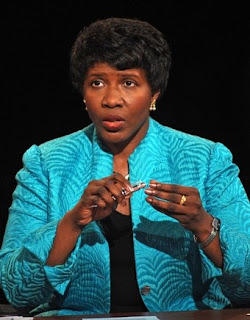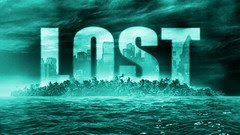
The Wreck of the Edmund Fitzgerald
By Gordon Lightfoot
Staff Writer
The legend lives on from the Chippewa on down; of the big lake they call Gitche Gumee.
The lake, it is said, never gives up her dead
when the skies of November turn gloomy.
With a load of iron ore - 26,000 tons more
than the Edmund Fitzgerald weighed empty
, that good ship and true was a bone to be chewed
when the gales of November came early.
The ship was the pride of the American side
coming back from some mill in Wisconsin.
As the big freighters go it was bigger than most
with a crew and the captain well seasoned, concluding some terms with a couple of steel firms
when they left fully loaded for Cleveland
.
And later that night when the ships bell rang
could it be the North Wind they'd been feeling?
The wind in the wires made a tattletale sound
and a wave broke over the railing
. And every man knew, as the Captain did, too,
T'was the witch of November come stealing.
The dawn came late and the breakfast had to wait
when the gales of November came slashing.
When afternoon came it was freezing rain
in the face of a hurricane West Wind
.
When suppertime came the old cook came on deck saying fellows it's too rough to feed ya
. At 7 p.m. a main hatchway caved in
. He said fellas it's been good to know ya.
The Captain wired in he had water coming in
and the good ship and crew was in peril
. And later that night when his lights went out of sight
came the wreck of the Edmund Fitzgerald.
Does anyone know where the love of God goes
when the words turn the minutes to hours?
The searchers all say they'd have made Whitefish Bay
if they'd fifteen more miles behind her.
They might have split up or they might have capsized
.
They may have broke deep and took water and all that remains is the faces and the names
of the wives and the sons and the daughters.
Lake Huron rolls, superior sings in
the ruins of her ice water mansion
. Old Michigan steams like a young man's dreams;
The islands and bays are for sportsmen.
And farther below, Lake Ontario
takes in what Lake Erie can send her
.
And the iron boats go as the mariners all know
with the gales of November remembered.
In a musty old hall in Detroit they prayed in the Maritime Sailors' Cathedral
. The church bell chimed, 'til it rang 29 times
for each man on the Edmund Fitzgerald.
The legend lives on from the Chippewa on down
, of the big lake they call Gitche Gumee
.
Superior, they say, never gives up her dead
when the gales of November come early.
The above piece is a true story written by Gordon Lightfoot, about the sinking of the S.S. Edmund Fitzgerald on Lake Superior. Lightfoot, as you perhaps know, is not a journalist, but a songwriter. Nieman Fellow and Charlotte Observer columnist Tommy Tomlinson and songwriter Mark Simos (of the Berklee College of Music), lead a session called: The Music of What Happens: A songwriter and a journalist apply music to reporting.”
Journalists like to talk about prose that sings. What better way to make that happen than to think like a songwriter? Tommy and Mark talked about what they can learn from each other—and how to make our stories more musical.
As far as Tommy knows, the only fictional account in the story was the cook’s quote about, “fellows it's too rough to feed ya
.”
Otherwise, the story is a great piece of narrative journalism. He offered 4 tips.
1. Rhythm. Read all your stories out loud. If the stories are hard to read out loud, it is probably hard to read on page. One of the best tricks to pull readers. Even if it is subtle, the reader can feel the beat and can anticipate it coming. Listen to the rhythm, of the Edmund Fitzgerald song, “The lake, it is said, never gives up her dead
when the skies of November turn gloomy.”
2. Rhyme – can be overdone, but it can have a great effect to pull readers in. Tommy likes indirect rhyme (not moon and June for example). Again, from the song: that good ship and TRUE was a bone to be CHEWED
when the gales of November came early.” The might not catch this, but subconsciously, the reader might be interested in keeping reading.
3. Timbre: the unique sound of a given object or instrument. Says Mark Simos: Think about what you saw and experienced and think about what words best match what you saw.
4. Tone: The overall effect of the piece.
They also gave us, along with “The Wreck of Edmund Fitzgerald,” a list of a dozen other great narrative songs
a. “Metal Drums,” by Patty Larkin. About the Holbrook Disaster.
b. “Two Soldiers,” traditional Civil War ballad.
c. “The Two Sisters,” of “The Wind and Rain.”
d. “The Last Time I saw Richard,” by Joni Mitchell.
e. “Waist Deep In the Big Muddy,” Pete Seeger.
f. “Poncho and Lefty,” by Townes van Zandt.
g. “El Paso,” by Marty Robbins.
h. “Polaroids,” by Shawn Colvin.
i. “The Boxer,” by Paul Simon.
j. “The Night they Drove Old Dixie Down,” Robbie Robertson.
k. “The Long Black Veil,” Danny Dill.
l. “Me and Bobby McGee,” Kris Kristofferson.
m. “The Devil Went Down to Georgia,” Charlie Daniels.
Mark was careful to mention that his list didn’t include any Beatles, Springsteen or Dylan.
But, if I had to add a few, by them, I would include, “Eleanor Rigby,” “Atlantic City, (which was kind of dramatized in the show, Cold Case), and Dylan’s aching, “The Ballad of Hollis Brown,” which he has said is “about a true story.”
Here are the lyrics. (I composed it like a story):
Ballad Of Hollis Brown
Hollis Brown, he lived on the outside of town.
Hollis Brown, he lived on the outside of town with his wife and five children and his cabin fallin' down.
You looked for work and money and you walked a rugged mile. You looked for work and money and you walked a rugged mile. Your children are so hungry that they don't know how to smile.
Your baby's eyes look crazy they’re a-tuggin' at your sleeve.
Your baby's eyes look crazy
they're a-tuggin' at your sleeve.
You walk the floor and wonder why
with every breath you breathe.
The rats have got your flour,
bad blood it got your mare. The rats have got your flour, bad blood it got your mare.
Is there's anyone that knows? Is there anyone that cares?
You prayed to the Lord above, “Oh please send you a friend.” You prayed to the Lord above,
”Oh please send you a friend.” Your empty pockets tell yuh
that you ain't a-got no friend.
Your babies are crying louder, it's pounding on your brain.
Your babies are crying louder,
it's pounding on your brain.
Your wife's screams are stabbin' you
like the dirty drivin' rain.
Your grass it is turning black,
there's no water in your well. Your grass is turning black
there's no water in your well.
You spent your last lone dollar
on seven shotgun shells
Way out in the wilderness
a cold coyote calls.
Way out in the wilderness
a cold coyote calls.
Your eyes fix on the shotgun
that's hangin' on the wall.
Your brain is a-bleedin'
and your legs can't seem to stand.
Your brain is a-bleedin'
and your legs can't seem to stand.
Your eyes fix on the shotgun
that you're holdin' in your hand.
There's seven breezes a-blowin'
all around the cabin door. There's seven breezes a-blowin'
all around the cabin door.
Seven shots ring out
like the ocean's pounding roar.
There's seven people dead
on a South Dakota farm. There's seven people dead
on a South Dakota farm.
Somewhere in the distance
there's seven new people born.
Read more...

















 Ernie Suggs is an enterprise reporter at The Atlanta Journal-Constitution, and a 2009 Nieman Fellow
Ernie Suggs is an enterprise reporter at The Atlanta Journal-Constitution, and a 2009 Nieman Fellow
 Lois Beckett, a Harvard senior, has interned for newspapers in Pennsylvania and West Africa and, most recently, for a Bombay fashion magazine.
Lois Beckett, a Harvard senior, has interned for newspapers in Pennsylvania and West Africa and, most recently, for a Bombay fashion magazine.